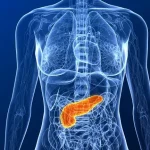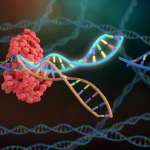by: Hiba Elkhatib
“Lung cancer is the most common cause of cancer-related death in the US and around the world. Almost everyone is going to know someone with lung cancer at some point. So, the goal is to try to diagnosis lung cancer as early as possible when patients have that possibility of a cure.” – Dr. Natalie Lui
Cancer is a topic that evokes many emotions, from fear to confusion to frustration, and the questions associated are never-ending. It becomes even more difficult when treatment options are limited and not widely accessible. Lung cancer is the leading cause of cancer deaths worldwide and, more specifically, non-small cell lung cancer (NSCLC) makes up 80-85% of lung cancer cases, making it the most common type of lung cancer. The American Cancer Society estimates that in 2020, there are around 135,720 deaths from lung cancer.
“Lung cancer most of the time is diagnosed when the tumor is quite advanced and has spread outside of the lungs, making the survival rate for advanced lung cancer really poor,” says Dr. Natalie Lui, a thoracic oncologist at Stanford and an author of the paper “Integrating genomic features for non-invasive early lung cancer detection.” Although there is no cure to these devastating statistics, lung cancer screening of high-risk patients has proven to reduce overall lung cancer-related mortality. The question then becomes: What strategies can be used to increase screening rates and accessibility?
The most commonly recommended screening method for lung cancer for high-risk populations aged 55-80 years in the United States is the low dose computed tomography (LDTC) method. The problem is that very few have access to this treatment option, and many are ineligible to get screened in the United States. Additionally, concerns over false positives prevent lung cancer patients from accessing early screening that could potentially save their lives. Given this reality, what strategies can be used to increase screening rates and accessibility?
Researchers at Stanford proposed that an increase in the availability and usage of blood-based tests could increase screening uptake. To accomplish this and enhance screening using blood plasma, Stanford researchers innovated a technique called the lung cancer likelihood in plasma (Lung-CLiP). This method is able to dedicate early-stage non-small cell lung cancer (NSCLC) patients through risk-matched controls. This machine learning method helps use circulating tumor DNA to carry out blood-based screening, and is built based on the CAPP-Seq method that was previously developed by Stanford researchers. Therefore, even though radiologic screening by low-dose computed tomography (LDCT) is the common approach, Stanford researchers are proposing that the analysis of ctDNA can help carry out blood-based screening, effectively enhancing screening accessibility and usage for non-small cell lung cancer. In summation, this is a technique that is trying to improve non-invasive NSCLC screening by combining molecular techniques with machine learning to be able to recognize NSCLC-derived cfDNA through the use of blood samples.
The first step in this method to enhance screening rates was to try to improve ctDNA detection rates for dedicating early-stage lung cancer through a tumor-informed approach. Emily Hamilton, a fifth-year PhD student in cancer biology at Stanford and one of the first co-authors of this research, describes how this tumor-informed approach is “our most sensitive method. We used it primarily to learn about the biology of ctDNA in early-stage lung cancer patients.”
The study conducted to accomplish this included 85 patients with stage I, II, and III whose tumor tissue, pretreatment plasma cfDNA and leukocyte DNA was genotyped using targeted deep sequencing of 255 genes by using a CAPP-Seq panel. The results showed that there were around four mutations in every patient and the ctDNA was found in around 45% of patients. Therefore, it was concluded that sensitivity to detection increases as the number of detected tumor mutations increases. However, to qualitatively test this conclusion that more mutations increase sensitivity and detection, the researchers used customized capture panels using tumor exome sequencing data of 17 patients whose ctDNA was not detected. Now combining these results with the previous population-based results, researchers found ctDNA detection rates of 42%, 67%, and 88% in patients with stage I, II, and III lung cancer.
Results showed that having a larger number of mutations monitored, or being able to analyze molecular depth, enhanced dedication rates. Furthermore, this assessment revealed the clinical and pathological characteristics of ctDNA and its association with the stage of lung cancer, the volume of the tumor, and its histology. Hamilton clarifies the intent of this research step by stating, “This analysis didn’t enrich ctDNA exactly, but simply helped inform how to develop our screening method.” In other words, it was the step that informed the development of Lung-CLiP.
The development of Lung-CLiP also took into account a phenomenon referred to as clonal hematopoiesis, in which hematopoietic cells develop somatic alterations and become a primary source of cfDNA. This allowed the researchers to better distinguish mutations and categorize their source as either clonal hematopoiesis or tumor-derived. As Hamilton explains, “We find mutations even in healthy controls, so using the presence or absence of mutations alone as a signal isn’t enough to segregate patients and controls.”
Therefore, researchers had to identify more features about the mutations and modules which then could be put into this classifier, or Lung CLiP, to be able to predict the cancer status of a sample. The most commonly mutated gene in human cancers is TP53, and the mutations it contains are most commonly seen in clonal hematopoiesis. Therefore, the ability of cfDNA-based cancer screening methods to distinguish between carcinoma-derived and clonal hematopoiesis-derived TP53 mutations is quite important.
Lung CLiP was developed using a multi-tiered machine learning approach that was first programmed to be able to estimate the likelihood that cfDNA mutations are tumor-derived. This was referred to as the SNV model, combining biological and technical characteristics to categorize features like cfDNA fragment size, the gene involved, and the chance of clonal hematopoiesis. Using the previously developed CAPP-Seq method, the researchers were able to pinpoint genome-wide copy number alterations using the on-target and off-target sequence readings it provided. Using the results from both the SNV model and the genome-wide numbers and placing them in a patient-level classifier, the researchers were able to estimate the likelihood of a blood sample having lung cancer-derived cfDNA.
Lung CLiP was trained and tested using a cohort of 104 patients with early-stage NSCLC and 98 non-cancer control subjects by assessing whether variants found in cfDNA matched with those in white blood cells (WBCs). Therefore, in addition to analyzing mutated genes, these researches also analyzed fragment size distribution of cfDNA molecules containing variants present in the WBCs or in the tumor biopsies that they matched too. Fragment size was an important consideration as it helped discriminate carcinoma-derived mutations from clonal hematopoiesis-derived mutations. Furthermore, there were two control groups: one comprised of 56 adults with annual radiologic screening for lung cancer which were the risk matched controls and 42 unmatched adult blood donors that were the low-risk controls. Lung CLiP was developed to be able to detect whether a sample was from a patient or from the healthy group by taking into account variant type, leukocyte support, mutations, and fragment length.
The results showed that NSCLC patients and the risk matched controls contained more cfDNA mutations and variants of clonal hematopoiesis than the low-risk controls, indicating how important having risk matched controls analysis in cfDNA is. To confirm and validate the results found in this cohort another control group made up of 48 risk matched adults at Massachusetts General Hospital was used.
Lung CLiP is remarkable in that it can be adjusted depending on the desired features the researchers are looking for. One of the main concerns with screening for lung cancer is the high false positive rate. Therefore, being able to adjust for high specificity would help minimize this concern. Stanford researchers found that at 98% specificity, the sensitivity rate was 41%, 54%, and 67% in stage I, stage II, and stage III cancer. To make sure that these rates were biologically plausible they were compared to tumor informed ctDNA levels and were found to have a 98% match. To confirm and validate the results found in this cohort it was compared to another control group made up of 48 risk matched adults at Massachusetts General Hospital. Similar results were also found, and the validity of Lung-CLiP was proven.
The prospects of Lung-CLiP are very promising and could improve lung cancer screening rates as a whole. Concern over false positives is a huge barrier and prevents lung cancer patients from accessing early screening that could potentially save their lives. It is tragically common that those at risk of having lung cancer don’t know that they have lung cancer until it has proliferated into a more severe form. Stanford researchers are proposing the development of a genomic method that acts as a preliminary strategy to detect early-stage lung cancer through the use of blood plasma. The importance of this research is the prospect of Lung CliP serving as an initial screening for over 90% of high-risk patients in order to qualify them for LDCT.
Hamilton emphasizes, “Less than 5% of patients that are eligible to receive LDCT actually receive it and so we think that a blood test that could be drawn at a regular doctor office instead of having to send someone to a special center making screening a lot easier and accessible for patients.” This method is similar to tumor-informed ctDNA analysis, but doesn’t need tissue genotyping. It specifically provides a non-invasive way to screen for NSCLC through cfDNA in a patient’s blood sample. Emily Hamilton and Dr. Lui both explain that Lung CliP is still in its experimental phase and further research is being conducted to build upon their findings with the hope that it eventually can be implemented routinely in a clinical setting. As Dr. Lui, explains, “Being able to diagnose lung cancer earlier would change the field of oncology completely.”






